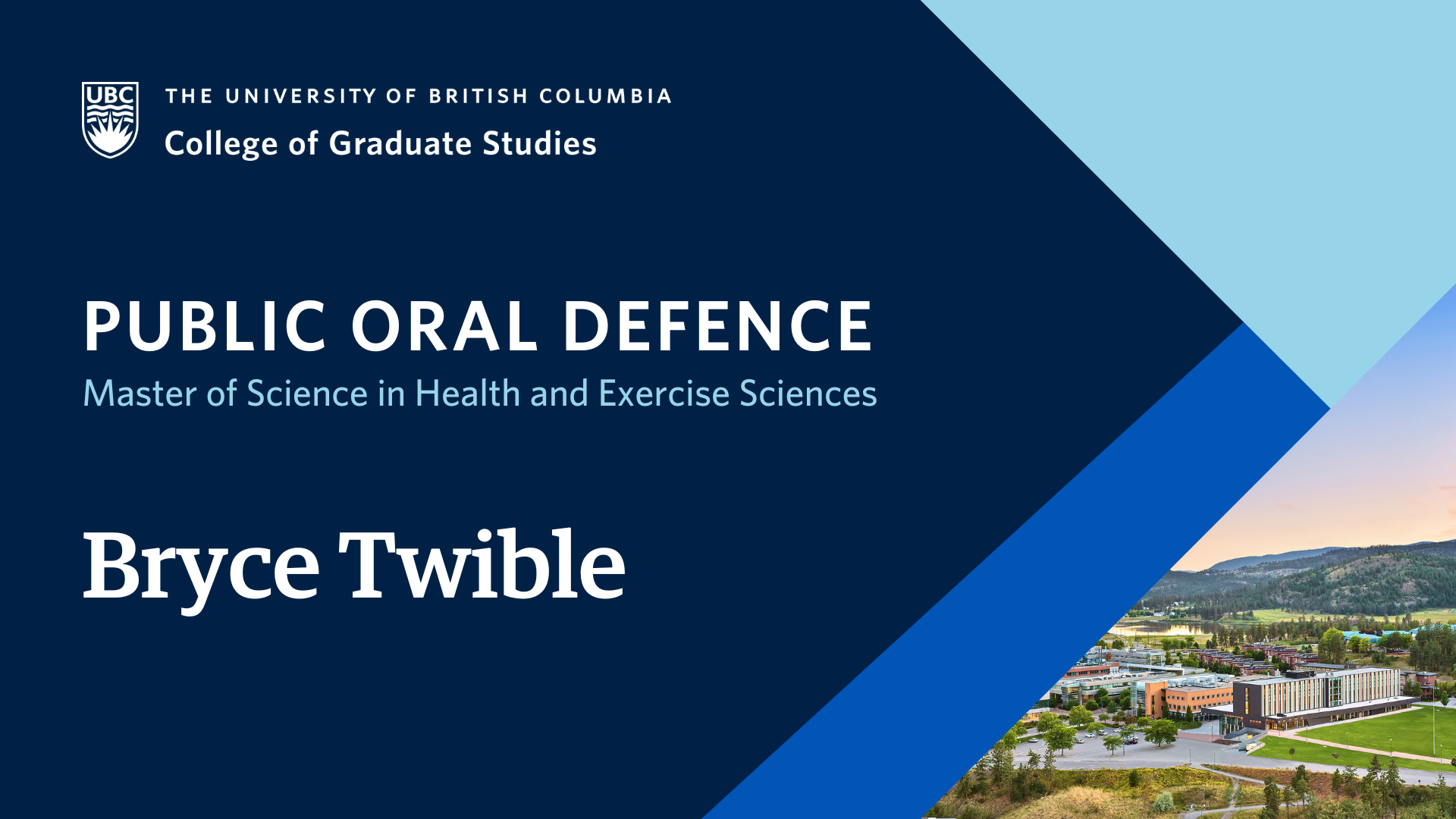
- This event has passed.
Thesis Defence: A Single Bout of On-Ice Training Leads to Increased Inter-Limb Asymmetry in Competitive Youth Hockey Athletes
June 12, 2023 at 1:00 pm - 4:00 pm

Bryce Twible, supervised by Dr. Brian Dalton and Dr. Chris McNeil, will defend their thesis titled “A Single Bout of On-Ice Training Leads to Increased Inter-Limb Asymmetry in Competitive Youth Hockey Athletes” in partial fulfillment of the requirements for the degree of Master of Science in Health and Exercise Sciences.
An abstract for Bryce Twible’s thesis is included below.
Defences are open to all members of the campus community as well as the general public. Registration is not required for in person defences.
ABSTRACT
Inter-limb asymmetry (ILA) refers to an imbalance between contralateral limbs due to anatomical or physiological variations. With proposed links to injury risk, physical development, and athletic performance, ILA can significantly influence neuromuscular function. Investigating factors, such as neuromuscular fatigue, that can influence ILA is critical for optimizing training programs, injury rehabilitation, and sport-specific performance. PURPOSE: To determine if a single bout of hockey-specific exercise creates or exacerbates lower limb ILA, and to investigate if a dose-response relationship exists between the intensity of on-ice training and the extent of change to lower limb ILA. METHODS: Before and after an on-ice training session, 33 youth ice-hockey athletes (14.9±1.7 years; 11 females) performed three repetitions of a maximal vertical countermovement jump (CMJ), eccentric hamstring contraction, and maximal isometric hip adduction and abduction. Force- and power- related variables were analyzed to determine neuromuscular function, and ILA was calculated as: ILA = [(Stronger Limb – Weaker Limb) ÷ Stronger Limb)] × 100%). RESULTS: The fatiguing on-ice training session elicited reductions in maximal isometric hip adduction (left: −7.3±10.3%; right: −9.5±9.6%) and abduction (left: −4.9±6.9%; right: −5.0±8.1%) force. There were no reductions (p≥0.10) in CMJ performance metrics (jump height, relative peak power, braking duration, total duration). The ILA was greater (p<0.05) following the on-ice training session compared to pre-training for CMJ propulsive impulse (6.3±2.9% vs 5.1±2.6%), CMJ braking rate of force development (19.3±7.6% vs 15.2±6.4%), and peak isometric hip adduction force (6.7±5.5% vs 6.1±4.1%). Relative peak force ILA during the CMJ was greater for the females only (5.5±3.9% vs 4.1±2.6%). There were no pre- and post-training session differences detected in ILA for CMJ braking impulse (pre: 9.4±5.5%; post: 10.1±6.8%), peak isometric hip abduction force (6.4±3.8% vs 5.9±3.5%) or peak eccentric hamstring force (7.8±5.3% vs 9.3±5.8%). There was no significant relationship between the magnitude of ILA change and on-ice training intensity (p≥0.09). CONCLUSION: Inter-limb asymmetry is increased in youth hockey athletes following an on-ice training session, presumably owing to neuromuscular fatigue. These findings indicate that youth athletes may experience increased ILA to maintain bilateral task performance when fatigued.